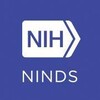
Periodontitis and Cardiovascular Events or "PAVE"
Cardiovascular DiseaseCoronary Heart Disease2 moreThe purpose of this study is to determine if treating periodontal infections (gum problems) will lead to fewer heart problems in patients at high risk for cardiovascular disease.

Improving Arm Mobility and Use After Stroke
Cerebrovascular AccidentAn individual suffering a stroke or other brain injury may lose function on one side of the body (partial paralysis). As the individual shifts activities to favor the unaffected side, the problem worsens. Constraint induced (CI) therapy forces the individual to use the neglected arm by restraining the good arm in a sling. This study examines the effectiveness of CI therapy for improving arm motion after stroke.

Field Administration of Stroke Therapy - Magnesium (FAST-MAG) Trial
Cerebrovascular AccidentThe goal of this study is to evaluate the effectiveness and safety of field-initiated magnesium sulfate in improving the long-term functional outcome of patients with acute stroke.

A Study to Evaluate the Effects of YM872 on Stroke Lesion Volume in Acute Stroke Patients
Cerebrovascular AccidentThis study will investigate the effects of a potential neuroprotectant compound, YM872, in the treatment of acute ischemic stroke. The study will determine if a 24-hour infusion of YM872, given within 6 hours of stroke onset, reduces the ischemic lesion volume as measured by MRI at 28 days after the infusion is given. The clinical effects of YM872 will also be determined by neurological function and disability scores at follow up visits through Day 90 of the study.

Aspirin Or Warfarin To Prevent Stroke
StrokeCerebral Infarction3 moreThe purpose of this study is to determine whether aspirin or warfarin is more effective in preventing stroke in patients with intracranial stenosis.

Robotic Upper-Limb Neurorehabilitation in Chronic Stroke Patient
StrokeWe have established the feasibility and effectiveness of robot-aided rehabilitation in stroke patients using a robot for neurological rehabilitation designed and built by MIT. Results of a pilot study of 20 patients were promising and showed that robot therapy is safe, tolerated by patients and produces a significant, measurable benefit. We propose to test that the robotic upper extremity trainer is an acceptable cost effective adjunct to standard occupational therapy for patients with dysfunction of the shoulder and elbow due to hemiparetic stroke in a VA rehabilitation program.

Preliminary Study of Transcranial Magnetic Stimulation for Stroke Rehabilitation
Cerebrovascular AccidentThis is a preliminary study to evaluate the possible use of transcranial magnetic stimulation (TMS), together with exercise, for rehabilitation of chronic stroke patients. It will identify the optimum stimulation settings (within the limits of current safety guidelines) to be used in a later rehabilitation study and confirm the safety of the procedure at these settings. Some previous studies using TMS to treat movement disorders such as Parkinson's disease have shown improvement in motor function; others have not. The results of this study may provide information to help researchers design better rehabilitation treatments after stroke. Stroke patients with residual arm function and no history of seizures may be eligible for this study. The stroke must have occurred at least 6 months before entry into the study and must have affected only one side of the brain. For the TMS procedure, subjects are seated in a comfortable chair with their hands placed on a pillow on their lap. An insulated wire coil is placed on the scalp. A brief electrical current is passed through the coil, creating a magnetic pulse that stimulates the outer part of the brain, called the cortex. This may cause muscle, hand or arm twitching if the coil is near the part of the brain that controls movement, or it may affect movements or reflexes. Subjects are asked to make movements, do simple tasks, or tense muscles. Metal electrodes are taped to the skin over the muscle for computer recording of the electrical activity of the hand and arm muscles activated by the stimulation. The testing lasts 2-3 hours.

Mode Selection Trial in Sinus Node Dysfunction (MOST)
ArrhythmiaCardiovascular Diseases4 moreTo determine if dual chamber rate-modulated pacing (DDDR) in patients with sick sinus syndrome is superior to single chamber pacing (VVIR) with respect to subsequent frequency of adverse clinical events such as stroke, quality of life and function, and cost effectiveness.

Home-based Computerized Cognitive Rehabilitation in Chronic Stage Stroke
Chronic StrokeCognitive ImpairmentThis study evaluates the effectiveness of Guttmann NeuroPersonalTrainer (GNPT), a tele-rehabilitation platform developed as a tool for the cognitive rehabilitation of chronic stroke patients. All patients will receive this treatment but in different order: half will receive GNPT and the other half will receive sham cognitive training; after a washout period of three months, crossover will occur and participants from the GNPT condition will receive sham cognitive training, while participants originally from the control intervention will receive GNPT.

Non-invasive Brain Stimulation (NIBS) and Dual-task Walking After Stroke
StrokeThe study aims to identify neural locus critical for dual-task walking (walking and talking) in individuals with stroke. To achieve this aim, the investigators apply repetitive transcranial magnetic stimulation (rTMS) to different parts of the brain and evaluate the effects of brain stimulation on dual-task walking speed.
